Recent Mold Remediation Posts
Got Mold? We Can Help | SERVPRO of West Hamilton/Oxford
2/21/2024 (Permalink)
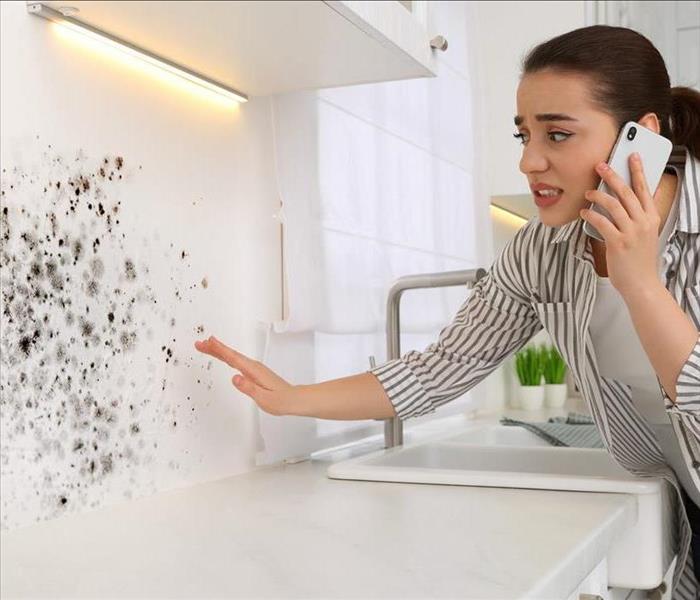 Has mold invaded your home? SERVPRO of West Hamilton/Oxford is here for the rescue. Call us today!
Has mold invaded your home? SERVPRO of West Hamilton/Oxford is here for the rescue. Call us today!
All homes are susceptible to mold growth, even if you think it will never happen to you. Mold is really persistent and can grow in many different areas as long as the conditions are right.
If you discover a mold infestation, you will probably react with disgust, and then not really know what to do after that. Even if you think you can clean it up by yourself, the mold could have spread under your floors or behind your walls and will continue to grow back until it is properly handled.
That’s where we come in! Our team will handle your mold situation with efficiency and confidence.
All About Mold
Mold spores are everywhere in our daily lives. They float through the air outdoors and they are even inside our homes. Open windows and doors can easily invite mold inside as well as through the vents in your HVAC system.
These spores are found everywhere, but they don’t grow everywhere. Mold needs to have a dark and damp environment to spread effectively, which means places like your attic, basement and crawl space are the most vulnerable.
Mold can be many different colors, ranging from black to bright green or even red. It can also have many different textures like slimy or chalky. However it looks and feels, it will probably have that familiar earthy or musty smell.
If your nose catches a whiff of this smell, it’s time to do some investigating. A single water leak or lingering moisture in your home is all it takes for mold to grow into a full colony just out of sight.
How to Reduce the Risk of Mold Infesting Your Home
Mold needs moisture, so the key to controlling potential mold infestations is to keep your home dry and to address leaks or moisture issues quickly. Keep your fans circulating and open windows in high-humidity areas like your bathrooms and kitchens from time to time.
Keeping your humidity levels on your thermostat between 30 and 50% is usually a good benchmark to keep moisture levels in check.
Addressing water issues quickly is another way to control your risk of a mold infestation. While a slow drip from a pipe or a leaky dishwasher may not seem like much, that’s all mold needs if the water gets under your floorboards or behind your walls. Stopping the flow of water and investigating mold growth can help you tackle these issues quickly.
Our Mold Remediation Process
If you do come upon a mold infestation somewhere in your home, leave it and call us right away. Some types of mold can be dangerous or even hazardous to breathe in, so let us handle it instead.
We will identify the type of mold and then contain the area so it can’t spread while we work. We will filter the air to remove the airborne spores while we work on cleaning and sanitizing the affected space.
If the mold has been growing for a while, a stubborn earthy odor may be left behind, so we will deploy our deodorizers to help remove the smell for good. We can also address any repairs if the mold degraded beams or ruined your walls. We will work hard to make sure your mold infestation becomes a distant memory!
Mold infestations should always be cleaned up by SERVPRO of West Hamilton/Oxford. Contact us right away.
3 Tips for Preventing the Spread of Mold
3/8/2019 (Permalink)
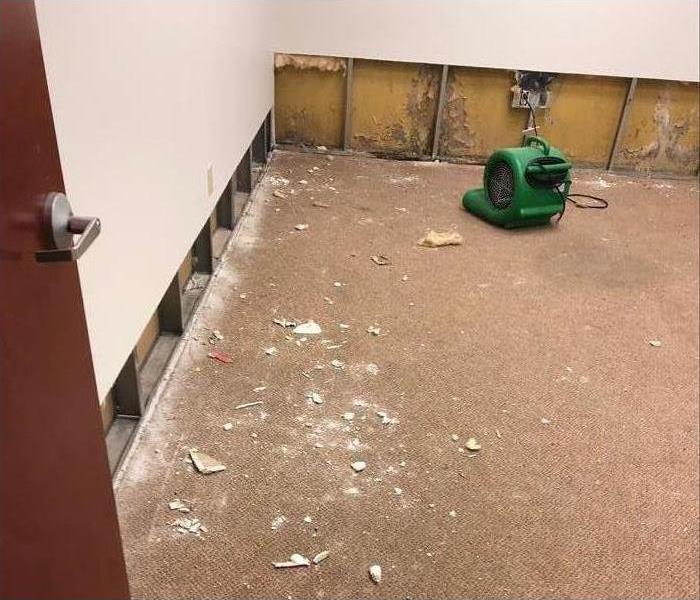 As soon as you know you have a black mold problem, make the call so that the professionals can start work on it.
As soon as you know you have a black mold problem, make the call so that the professionals can start work on it.
3 Tips For Preventing The Spread Of Mold
If you have ever had a mold problem in your home in Oxford, OH you know that it can get out of control in a hurry. Left on its own, this fungus will continue to grow as long as it has air flow, moisture and food. The best way to prevent spreading mold in your home is to deny it access to the elements that exacerbate it. Here are three ways to do that.
1. Enlist Professional Help
A patch of mold that's no bigger than an inch on a countertop can usually be cleaned with detergent. For larger problems, however, you need to call mold remediation experts. These specialists know exactly how to contain mold so that it doesn't get sucked into your HVAC vents and spread further. They also can do a thorough job of drying out the affected area to deprive mold of moisture.
2. Avoid Amateur Troubleshooting
Many homeowners who are concerned about spreading mold think that spot cleaning a problem area before professional help arrives will halt its growth. The truth is, however, that disturbing the mold growth without first blocking off the area the way the experts will do it can actually cause the spread you're hoping to avoid. Mold spores cannot be seen with the naked eye, so it's impossible to see if it's spreading.
3. Don't Delay
Mold growth will get bigger if you let it. It may be tempting to wait for a more convenient time in your schedule to have work done on your home, but this is not an issue that can wait. As soon as you know you have a black mold problem, make the call so that the professionals can start work on it.
Fungus growth is not something you should ignore. The most effective mold remediation is quick, professional attention. Follow these tips to prevent spreading mold.
Understanding Mold: Bread Mold
1/21/2019 (Permalink)
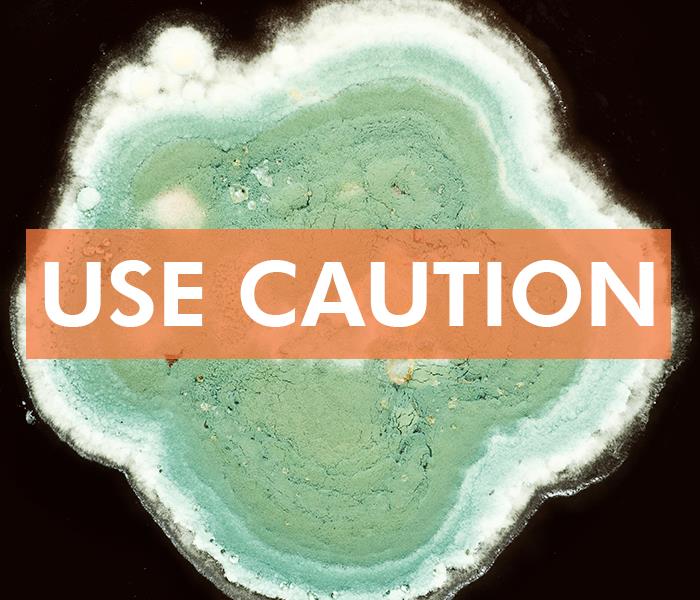 Take precaution with Mold.
Take precaution with Mold.
Bread Mold
Bread mold is a common issue that most homeowners have come across, but it may be something that they do not entirely understand. How many times have you gone to make a sandwich to find that 3-day-old loaf of bread fuzzy and discolored? Mold is not a complex organism, but it can be dangerous.
1. Cause of Mold
The fungus does not discriminate between hot and cold climates. You may find moldy bread in your drawer, or you may even discover fridge mold. The truth is that mold is a living organism that enjoys cool temperatures in dark and damp spaces. While a drawer is not necessarily damp, bread does have enough moisture and nutrients to make this particular organism happy.
2. Avoiding Ingestion
Bread mold has been known to make people sick, and every level of precaution should be made when coming into contact with mold. While it is not necessarily deadly, people can be allergic to mold, and the taste and smell can make you vomit. It is true that some molds are poisonous, but mold on bread is likely harmless to your long-term health.
3. Basic Safety
Mold can create problems if ingested, so you may want to follow basic safety precautions if you have to handle it. First, don’t smell it because it may cause respiratory issues. Second, seal it in a plastic bag or leave it in the bread bag tied off. Third, if the mold came into contact with any surface, clean the area. Finally, check that the mold did not spread.
4. Treating Underlying or Spreading Conditions
While moldy bread is common, it is not always the source of fungus growth. It is possible that a leaky pipe behind your kitchen cabinets has caused the initial fungus which has now spread into your bread drawer. If you suspect that there may be a larger underlying issue, then you may want to contact a mold remediation specialist in the Hamilton, OH, area to clean and restore your home.
Bread mold is a common household problem and one that is typically independent of other issues. However, you should still take precautions to avoid potential illness.
3 Ways To Slow the Spread of Mold After a Flood at Your Business
11/27/2018 (Permalink)
 Fleet in Trenton,OH ready for mold
Fleet in Trenton,OH ready for mold
Actions to Take Before Service Technicians Arrive
When a flood affects your Trenton, OH, business, there is much to consider when it comes to cleanup efforts. Draining standing water and salvaging important equipment is probably a priority for you; however, once flood waters are removed, you could be facing a major black mold problem as soon as 24 hours later. Calling in service technicians who know how to handle the cleanup is vital, but there are a few actions you can take before they arrive.
1. Turn Off the Air Conditioner
Switching off your building’s air conditioning system can stop the spread of mold spores in two ways. First, a lack of air flow will likely slow the speed at which they move through the air ducts. Secondly, it will be more difficult for the spores to find and travel to moist areas where they can settle and multiply.
2. Open Windows
While it is difficult to stop the spread of black mold when you already have a moisture problem due to a flood or a pipe break, airing out affected rooms and allowing trapped humid air to escape can lower the moisture levels in these areas. Open as many windows as possible and direct electric fans toward the center of the room to push humid air out.
3. Turn Off the Water
It is a good idea to turn off the building’s water until your mold cleanup service arrives and the technicians can survey the damage. This can be especially important if the flood was caused by a burst pipe or water line. The fewer puddles of standing water there are in your building, the lower the risk for mold to form. Be sure you know where the main water shutoff valve is before a water emergency so you can act quickly.
Flooding at your Trenton, OH, business can cause considerable damage. However, when you know how to slow the spread of black mold and other types of fungi in the aftermath, you could help your business recover faster.
How To Keep Mold Growth at Bay After Residential Flooding
10/4/2018 (Permalink)
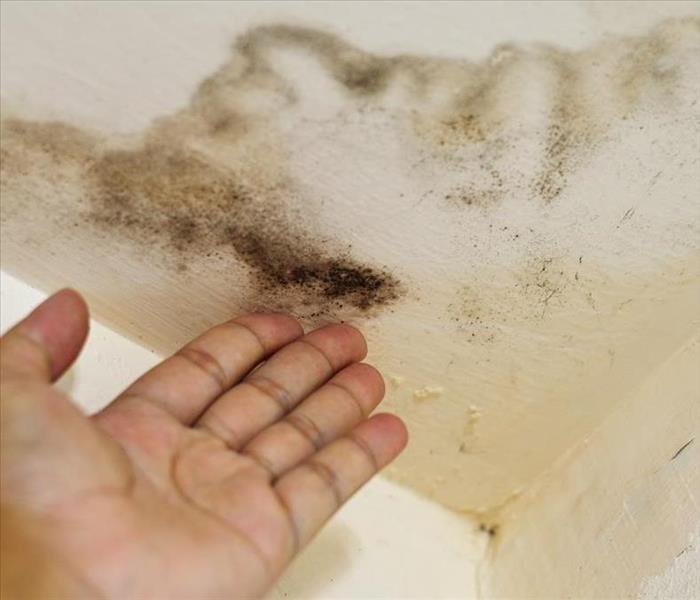 Mold in Hamilton
Mold in Hamilton
Recovering from a flood in Hamilton, OH, can be a stressful experience as you work quickly to salvage and restore the affected parts of your home. While you race to save valuable items, mold can develop across the house and become an even greater problem. Some areas are especially prone to mold growth:
- Wooden furniture and other porous surfaces
- Microwaves, washers, dryers, and other home appliances
- Insulation and drywall
By prioritizing some steps of flood recovery, you can stop mold from becoming a nuisance, make the recovery process much easier to complete, and avoid a lengthy mold removal process altogether.
Remove Standing Water First
Because any area with stagnant water poses an increased risk of mold growth, it is crucial to remove any leftover water from the house as quickly as possible. Ideally, you should clear the house of sitting water within 24 hours of the initial flooding to minimize mold damages and make the rest of your recovery work simpler.
Focus on the Floors
Flood water can easily seep below the surface of your floors and create large areas of mold beneath them if not properly dried. Depending on the type of floor affected, you may be able to save carpets and other porous surfaces if you can treat them quickly enough. A water damage restoration company can help you decide whether a floor needs repair or replacement.
Keep an Eye out for Growth
No matter how well you attend to water damage, your house will remain at a heightened risk for mold growth following a flood. As you settle back into your home, stay watchful for mold, especially in dark, warm places. If left untreated, these small patches of mold can quickly spread spores throughout other parts of the house, putting a damper on your restoration efforts.
If your home sustains water damage after flooding, work quickly to minimize the extent of the destruction. Eliminate standing water, treat flooring materials immediately, and watch for the growth of mold. Contacting a professional for help can make the recovery process easier.
3 Reasons Rain May Lead to Mold Growth
9/24/2018 (Permalink)
Black mold can show up in your Oxford, OH, house seemingly overnight. Have you noticed a connection between rainy days and mold growth? There are a few instances when rain can lead to mold popping up in your home.
- Faulty Roof.
- Bad Foundation.
- Poor Attic Ventilation.
No matter what issue has caused your moisture problem, you need to get to the heart of the issue. Wiping away the surface mold won't help you rid your home of the fungus. Instead, you need to call in a professional mold cleanup crew.
Rain sometimes exacerbates issues with your home. If you notice black mold pop up after every downpour, it could be tied to a bigger issue with your house.
Reasons You May Have Mold
9/24/2018 (Permalink)
If your roof is missing shingles, it may not be able to keep water out of your home like it should. This can lead to water buildup in your attic or drips down your walls, which invites mold spores to make a home.
Cracks in your foundation could be another way excess moisture makes it into your home. During the rain, the falling water goes into the ground and starts to travel. If your foundation isn't properly sealed, the water can find its way into your home.
When the attic does not have proper ventilation, condensation can start to build up in the space. Even condensation is enough of a moisture problem to allow black mold to make a home.
Weather stripping around windows and doors can become cracked and faded over time. When it rains, the water may seep its way into these crevices. Mold may start to build up around your windows and doors because of the trapped moisture.
Heavy rains can lead to too much water for an environment. When this happens, floods can fill your basement or garage. Flooding is a common cause of mold growth.
Mold Prevention: It's Easier Than You Think
9/11/2018 (Permalink)
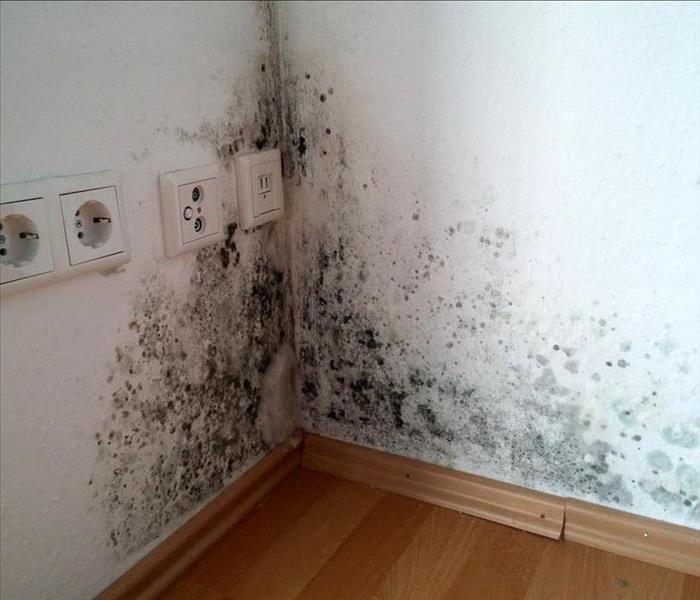 Mold damage in Hamilton, OH
Mold damage in Hamilton, OH
Mold damage can be costly to remediate, and if allowed to spread, it can cause irreversible damage to your home. For this reason, you want to take measures to stop it in its tracks or, better yet, prevent it entirely. There are nine mold prevention steps you can begin doing today to prevent growth and to preserve the integrity of your home:
- Identify problem areas and correct them immediately.
- Dry wet areas as quickly as possible.
- Equip rooms prone to moisture buildup with adequate ventilation.
- Equip your home with mold-resistant products.
- Monitory indoor humidity levels.
- Clean or repair gutters.
- Direct water away from your home.
- Keep mold off household plants.
- Improve airflow in your home.
When you follow these nine steps, you can better keep dreaded house fungus at bay.
Inspection Is Key to Mold Prevention
Mold thrives in moist environments, which is why you need to regularly inspect areas in which there is a lot of moisture. These include bathrooms, laundry rooms, basements and beneath any sinks. If you discover water damage, a leak or another moisture issue, correct it immediately and then dry out the area. This step is crucial in preventing mold.
Home Improvement Helps
You can also prevent mold growth by outfitting your home with all the right equipment. This includes dehumidifiers, adequate ventilation systems and mold-resistant products.
There are improvements you can make to the exterior of your home to keep mold at bay as well. For one, direct water away from your home. This may require regrading your landscape. Make sure your gutters are in good working order and clean year-round. This can help prevent water from sitting on your roof and causing costly damage.
Mold prevention is a necessary evil of homeownership. If you want to preserve the integrity of your Hamilton, OH, home, implement the above measures and work with a mold remediation expert who can provide advice and help as necessary.
Is Indoor Mold Growth Related to Rain?
5/15/2018 (Permalink)
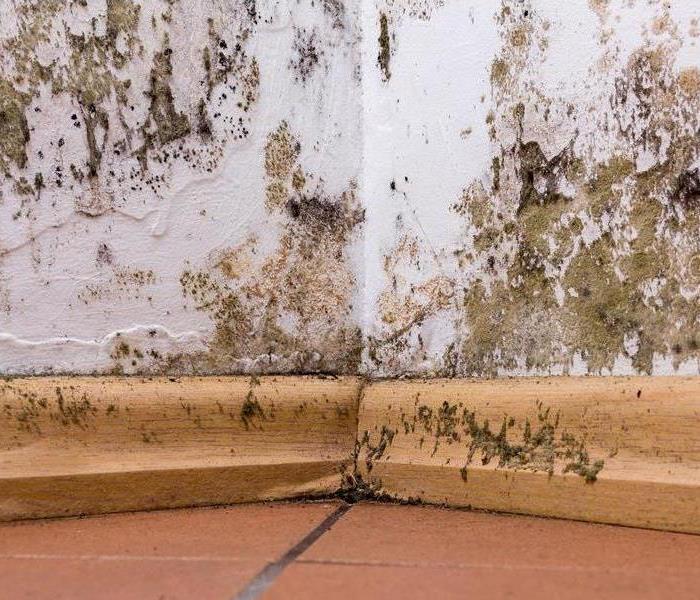 You can’ t just wipe things down after it rains and hope for the best.
You can’ t just wipe things down after it rains and hope for the best.
It seems strange, but every time it rains you see a fresh spate of mold climbing up your walls or down the back of your toilet. Is the mold caused by the rain? Are you seeing causation without correlation, or is the mold growth actually related to rainy weather in Hamilton, OH?
It’s Not the Rain, It’s What the Rain Causes
If your house was leak-proof and airtight, you’d never have a problem with mold. But if you have a leak or other structural issues, every time it rains your house is suffering water damage. Mold, black mold in particular, thrives where you have a moisture problem. So, in a way, the rain is causing your mold problem, but your real issue is:
• Water from rain storms leaking in through roofs and windows, or even blowing through improperly sealed doors
• Standing water in rain gutters possibly seeping into wood or roof tiles
• Flooding creating standing water that fuels black mold
• Water damage from leaks softening and rotting insulation, drywall, and wood to create a nest for mold to proliferate
• Water damage leading to additional breakage and leaks in interior pipes and fixtures, causing more water damage and compounding the issue
So How Do I Prevent Mold When It Rains?
You can’ t just wipe things down after it rains and hope for the best. For mold cleanup and remediation, you need to act quickly to eliminate the source of the leak and water damage, and get rid of the mold. Black mold removal can be tricky, but it is definitely possible with the right assistance. Once you get rid of mold, the key is to prevent it from coming back by remaining diligent about the conditions that led to mold growth in the first place. You can prevent mold by ensuring any moisture issues are handled quickly and efficiently. For more information, visit http://www.SERVPROwesthamiltonoxford.com/.




 24/7 Emergency Service
24/7 Emergency Service






